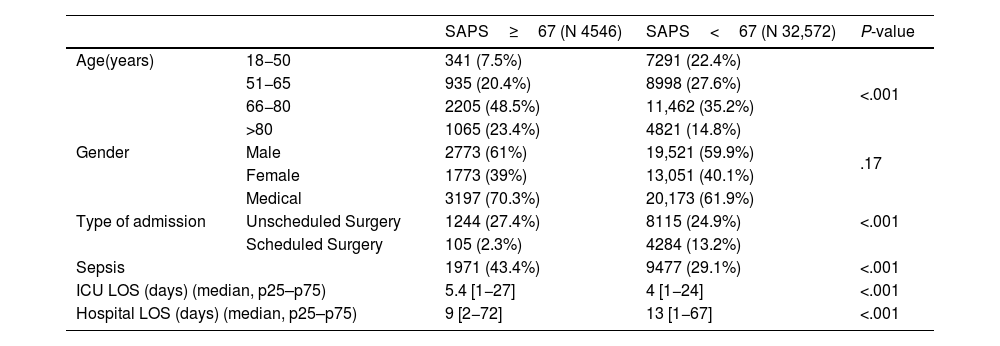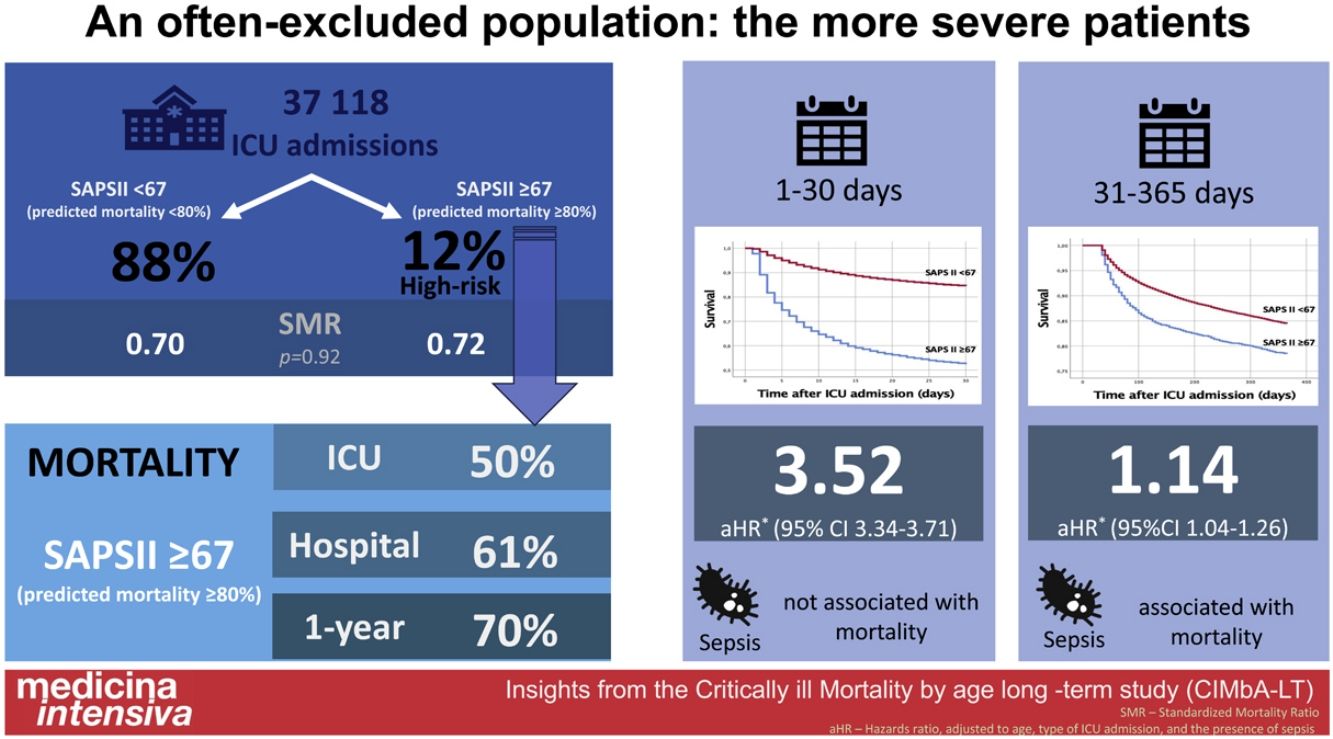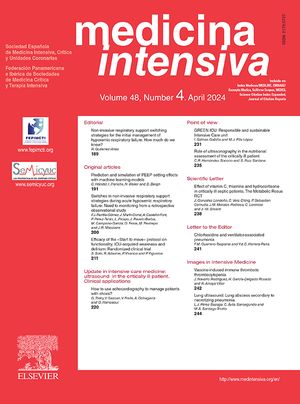As calculated by the severity scores, an unknown number of patients are admitted to the Intensive Care Unit (ICU) with a very high risk of death. Clinical studies have poorly addressed this population, and their prognosis is largely unknown.
DesignPost hoc analysis of a multicenter, cohort, longitudinal, observational, retrospective study (CIMbA).
SettingSixteen Portuguese multipurpose ICUs.
PatientsPatients with a Simplified Acute Physiology Score II (SAPS II) predicted hospital mortality above 80% on admission to the ICU (high-risk group); A comparison with the remaining patients was obtained.
InterventionsNone.
Main Variables of InterestHospital, 30 days, 1 year mortality.
ResultsWe identified 4546 patients (59.9% male), 12.2% of the whole population. Their SAPS II predicted hospital mortality was 89.0±5.8%, whilst the observed mortality was lower, 61.0%. This group had higher mortality, both during the first 30 days (aHR 3.52 [95% CI 3.34–3.71]) and from day 31 to day 365 after ICU admission (aHR 1.14 [95%CI 1.04–1.26]), respectively. However, their hospital standardized mortality ratio was similar to the other patients (0.69 vs. 0.69, P=.92). At one year of follow-up, 30% of patients in the high-risk group were alive.
ConclusionsRoughly 12% of patients admitted to the ICU for more than 24h had a SAPS II score predicted mortality above 80%. Their hospital standardized mortality was similar to the less severe population and 30% were alive after one year of follow-up.
Según las escalas de gravedad, un número indeterminado de pacientes ingresan en la Unidad de Cuidados Intensivos (UCI) con riesgo de muerte muy elevado. Este grupo ha sido poco abordado en los estudios clínicos y se desconoce en gran medida su pronóstico.
DiseñoAnálisis post-hoc de estudio multicéntrico, de cohortes, longitudinal, observacional y retrospectivo (CIMbA).
ÂmbitoDieciséis UCI polivalentes portuguesas.
PacientesPacientes con mortalidad hospitalaria prevista en el Simplified Acute Physiology Score II (SAPS II) superior al 80% nel ingreso en la UCI (grupo de alto riesgo); se compararon con los restantes.
IntervencionesNinguna.
Variables de interés principalsMortalidad hospitalaria, a 30 días y 1 año.
ResultadosSe identificaron 4546 pacientes (59.9% hombres), 12.2% da población. La mortalidad hospitalaria estimada por lo SAPS II fue de 89.0±5.8%, aunque la observada fue inferior, 61.0%. Este grupo presentó mayor mortalidad, tanto durante los primeros 30 días (aHR 3.52 [IC 95%: 3.34–3.71]) y desde el día 31 hasta el día 365 después del ingreso en UCI (aHR 1.14 [IC 95%: 1.04–1.26]). Sin embargo, su índice de mortalidad hospitalaria estandarizada fue similar a los otros pacientes (0.69 vs. 0.69; P=.92). Al primer año de seguimiento, 30% de los pacientes de alto riesgo estaban vivos.
ConclusionesAproximadamente 12% de los pacientes ingresados en la UCI durante más de 24 horas tenían una mortalidad prevista por SAPS II superior al 80%. Su mortalidad hospitalaria estandarizada fue similar a la de la población menos grave y el 30% estaban vivos después de un año de seguimiento.
Article
Go to the members area of the website of the SEMICYUC (www.semicyuc.org )and click the link to the magazine.











